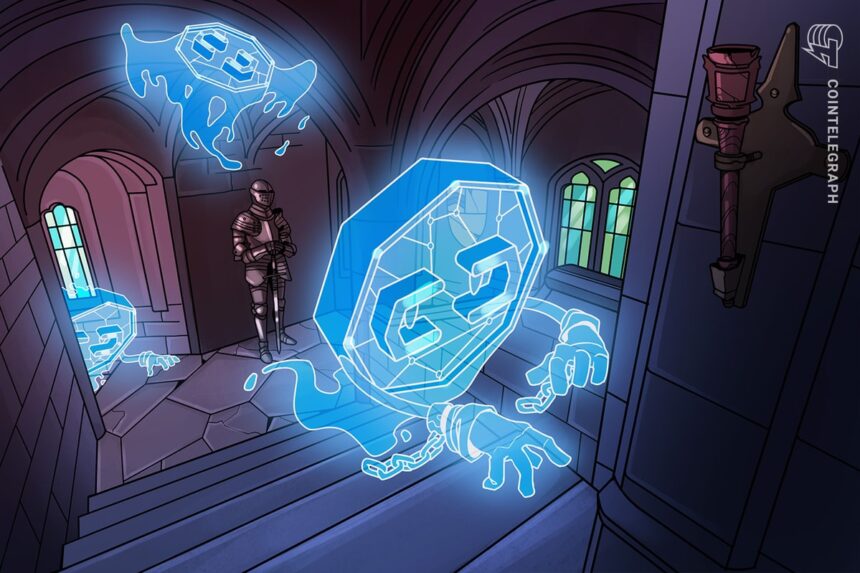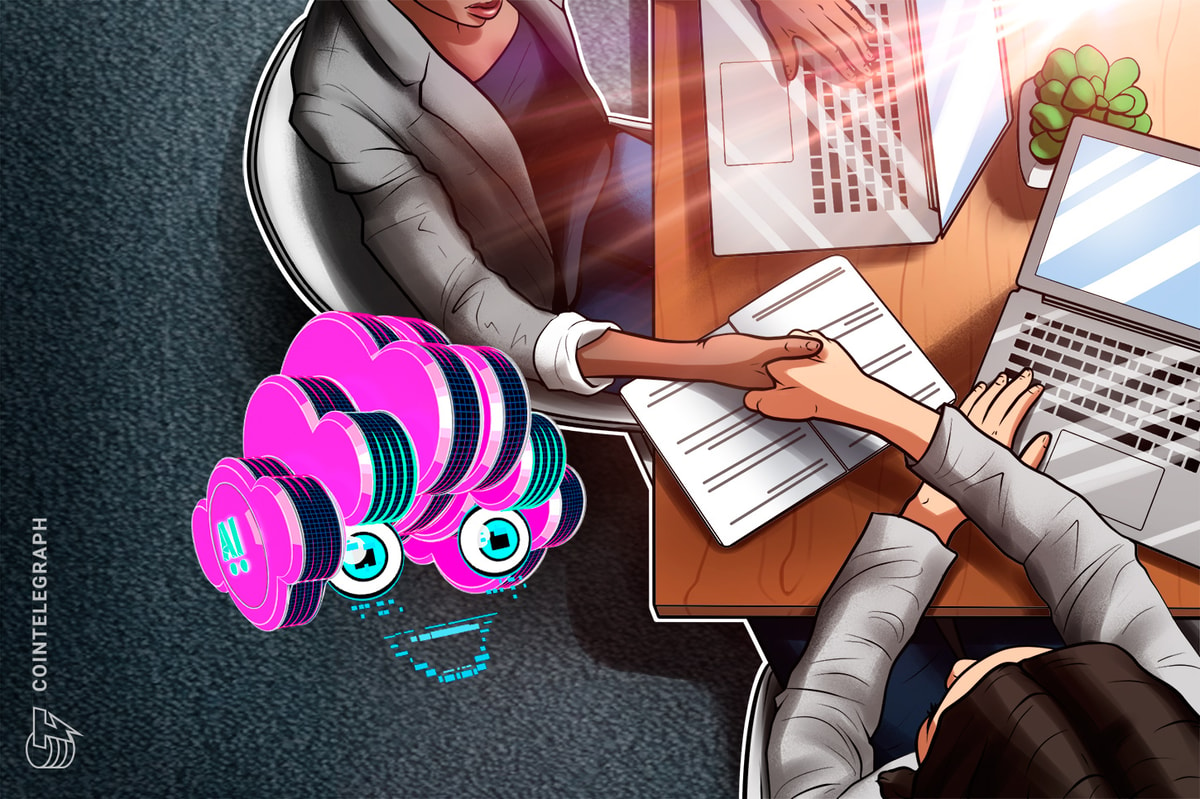Key takeaways
-
Ghost chains are blockchains which might be technically operational however have little to no real-world utilization, growth, or group engagement.
-
Common warning indicators embody stagnant developer exercise, low transaction quantity, inactive communities, and trade delistings.
-
Even well-funded or corporate-backed initiatives like Diem, KodakCoin, and Luna can fail if adoption and ecosystem progress stall.
-
Investors and builders can keep away from ghost chains by monitoring on-chain exercise, GitHub commits, token liquidity, and group well being earlier than committing assets.
Ghost chain defined: Understanding dormant and inactive blockchain initiatives
A ghost chain refers to a blockchain that, whereas technically nonetheless operating, has been deserted by its builders and group. These are typically known as lifeless blockchain networks or dormant crypto initiatives.
While the chain could as soon as have had momentum or hype, over time, developer exercise stalls, person engagement drops and transaction quantity plummets. Gradually, indicators of failure develop into noticeable: no current updates, diminished person exercise and minimal real-world utility. Seemingly, they could typically be operational and lively on the floor, however are devoid of any helpful exercise and look like fading into obscurity.
Essentially, it’s a blockchain that’s technically alive however functionally lifeless. The rise of ghost chains stems from a number of overlapping components. Often, the unique builders or groups cease contributing, leaving repositories untouched for months. Eventually, the core growth group ceases communication, roadmap updates cease and customers migrate to extra lively ecosystems. Communities diminish and liquidity dries up.
In time, the community turns into a ghost chain, disconnected from the colourful person base it as soon as hoped to draw. From once-promising Ethereum killers to obscure layer-1s, the crypto panorama is dotted with examples of such initiatives that misplaced steam after preliminary hype. Whether as a consequence of a scarcity of utility, group or funding, these chains now drift within the blockchain graveyard. Spotting the warning indicators might help keep away from being caught in a “digital ghost city.”
Did you recognize: In June 2024, Binance delisted WAVES, OMG Network (OMG), NEM (XEM), and Wrapped NXM (WNXM) as a consequence of low buying and selling quantity, weak liquidity and restricted growth exercise, all symptomatic indicators of chains drifting towards ghost standing.
Common traits of a ghost chain
Not each declining blockchain qualifies as a ghost chain. However, a number of recurring indicators might help establish a challenge getting ready to irrelevance. These are the important thing indicators of a failed challenge (or on its solution to turning into one):
-
Diminished developer exercise: An absence of current code commits, model releases or updates.
-
Inactive communities: Forums and social platforms present minimal or no engagement.
-
Broken or outdated web sites: Project data is stale and documentation is incomplete.
-
Low onchain transaction quantity: Only a handful of transactions happen day by day, typically automated or inside.
-
Exchange delistings and low buying and selling quantity: The native token of the chain could also be delisted or exhibit extraordinarily skinny liquidity.
These crimson flags typically seem collectively in dormant crypto initiatives, the place the utility of the token is questionable and person belief is eroded.
How to research and establish ghost chains?
To defend time, capital and assets, it’s important to proactively assess any blockchain earlier than engagement. The desk under lists some essential questions that you should ask earlier than participating with a blockchain:
-
Examine transaction knowledge: Use public blockchain explorers to evaluate how ceaselessly blocks are being produced and if customers are literally sending transactions. If block explorers present minimal day by day transactions or pockets exercise, that’s a giant warning signal. Some chains course of solely a handful of transactions per day, with most blocks practically empty.
-
Check DApp exercise: A thriving chain can have decentralized apps, DeFi protocols, NFT marketplaces and different sensible contracts in use. If the ecosystem is barren, chances are high it’s not attracting builders or customers and is on its solution to decline.
-
Assess GitHub or repository updates: Check the challenge’s GitHub to see if builders are nonetheless committing code and fixing bugs. If the final significant commit was six months earlier than, then that could be a crimson flag and require additional probing.
-
Monitor social media and communication channels: Look for AMA classes, dev updates or community-driven content material. Telegram teams with no moderators, Discord with extra bot spamming than customers or X accounts that haven’t posted in months — these are all indicators of failed chains. If the group feels abandoned, it in all probability is and is a vital and straightforward crimson flag to note.
-
Review token efficiency: A plummeting token value with negligible commerce quantity typically displays broader abandonment. While value alone doesn’t decide success, a token that constantly declines with no buying and selling quantity or liquidity is an issue.
-
Crypto occasions: Check for any lively participation and presence of the chain in current crypto occasions similar to a sales space, speaker dialogue, meetups, and so forth. Consistent lack of the group to showcase its choices is an indication of decline.
Keep in thoughts that overpromising and weak or no supply to match the preliminary hype is one thing to search for. “The quickest chain,” “Solana killer,” or “100,000 TPS” are some extravagant guarantees typically made within the blockchain ecosystem however hardly ever delivered. If the roadmap is outdated and no updates are forthcoming, it is likely to be time to maneuver on.
Did you recognize: Feathercoin, launched in 2013 by Peter Bushnell, the pinnacle of IT at Oxford University’s Brasenose College, as a sooner Litecoin various, garnered preliminary curiosity however largely grew to become a ghost chain amid stiff competitors and its personal dwindling growth, resulting in an total decline in curiosity.
Ghost chain examples: Projects that misplaced momentum
Several blockchain initiatives, as soon as praised for innovation, have develop into ghost chain examples as a consequence of declining utilization and visibility:
While every challenge failed for various causes, the frequent thread is evident: Without lively ecosystems and sustained developer engagement, even probably the most well-funded blockchains can fade into obscurity.
Did you recognize: Diem, Facebook’s bold blockchain challenge previously referred to as Libra, raised over $1.3 billion and secured backing from main companies like Visa and PayPal, but it was deserted in 2022 after intense regulatory strain, making it probably the most high-profile company lifeless initiatives in crypto historical past.
Risks and penalties of ghost chains
The collapse or stagnation of blockchain networks has wider implications. These lifeless blockchain initiatives contribute to digital muddle networks operating with no customers, consuming assets and creating confusion for traders and builders.
Major penalties embody:
-
Loss of investor capital as a consequence of token devaluation.
-
Wasted growth time and infrastructure.
-
Decreased belief in newer blockchain initiatives.
Beyond monetary loss, ghost chains pose safety dangers. Abandoned domains, obtain hyperlinks and legacy wallets can develop into phishing traps. Fraudsters could repurpose previous sensible contracts or resurrect historic knowledge to deploy malicious code, deceiving customers who reconnect with the chain anticipating legitimacy.
It’s essential to notice that not all inactive crypto blockchains are completely doomed. Some may even see a revival with renewed group assist, updates or rebranding. But that is an exception and never the norm.
In the subsequent bull cycle, new blockchains will rise, however just a few will stick. Knowing find out how to differentiate between a vibrant protocol and a ghost chain is among the most respected abilities within the area immediately. Stay sharp, keep skeptical and all the time do your personal analysis.
This article doesn’t include funding recommendation or suggestions. Every funding and buying and selling transfer includes danger, and readers ought to conduct their very own analysis when making a call.











